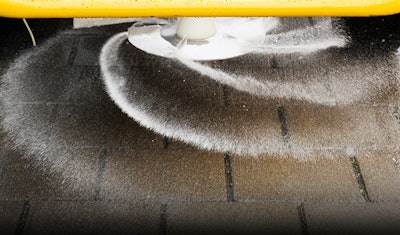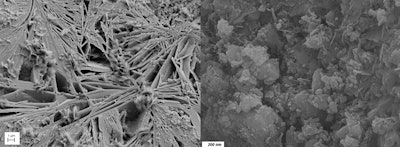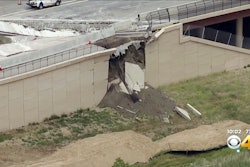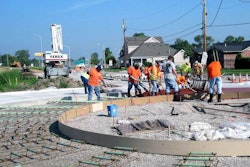
Researchers from Brunel University London announced that researchers have created a new concrete mix that absorbs 64 percent less water and 90 percent less salt than normal concrete, and is as much as 42 percent stronger than normal concrete, which could lead to salt-resistant pavements that withstand the corrosion caused by salt applications in the winter.
“Incorporation of a sodium acetate compound into concrete, at the mixing stage, works on absorbing some of the water to form crystals that line the walls of the pores in the concrete,” said Mazen Al-Kheetan, a PhD student at Brunel’s department of Civil and Environmental Engineering who is heading up the project, in a university press release. “These crystals increase the hydrophobicity of the concrete — the amount concrete repels the water — which ensures the reduction of water uptake through the pores. Also, when applying de-icing salt to pavements made from this concrete mix, the presence of the protective compound within the pores work on fending off both the water and the waterborne chlorides.”

“In our initial experimental work, we noticed that using the sodium acetate compound might reduce the compressive strength of concrete, despite its advantage in reducing the water absorption of concrete,” Al-Kheetan said in the press release. “Accordingly, we have worked on producing an optimum formulation of concrete with optimum compound dose to achieve maximum protection and preserved strength.”
The research paper, Integration of Anhydrous Sodium Acetate (ASAc) into Concrete Pavement for Protection against Harmful Impact of Deicing Salt, is available through The Journal of the Minerals, Metals & Materials Society.









